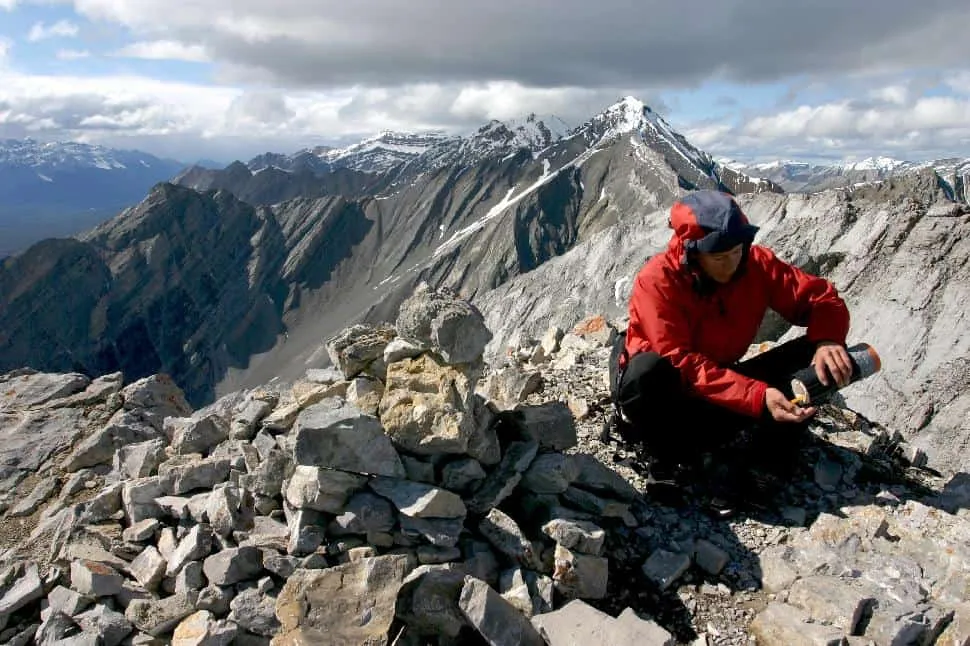Profile: Sarah Hueniken

By Lynn Martel
The first time Sarah Hueniken tied into the lead end of a climbing rope was on a post-university road trip to Nevada’s Red Rock Canyon.
Unaware she was embarking on a life-long commitment to climbing, she cruised up her first lead, graded 10a. Stoked, she decided she was ready to lead 11a.
“I scared myself shitless,” Hueniken says. “That set me straight for a while.”
Mastering the basics before moving on to bigger challenges, she learned, was essential. Now with a first ascent of a 5,965-metre peak in China (Shachun), difficult 5.13 rock climbs, podium finishes at various competitions and first ascents on waterfall ice routes in Iceland and the Canadian Rockies on her resume, she’s reached the summit of her sport. In February, Hueniken, 40, solidified her place at the top of the small number of women who climb the world’s hardest mixed ice and rock routes by completing the Vail, Colorado M13 test-piece, Stratofortress. The first North American woman to climb M11, M12 and her first M13, Steel Koan, near her hometown of Canmore, Alberta, in 2014, she wonders where the other women are.
“I’m really not sure why,” Hueniken says. “There should be lots of other women out there climbing these grades.”
Physical strength, she suggests, is rarely the barrier. Mixed climbing demands a high level of mental tenacity, coupled with an ability to control fear.
“You feel like you’re going to fall off, but if I tell myself to hold on harder and longer—I just have to want it more,” she says. “You have to fight the fear. You have to overcome it and trust that you’re going to make it work out.”
Addressing the factors that hold women climbers back is a subject Hueniken has devoted much of her guiding career to, teaching rock and ice climbing skills to female-only groups as one of barely a dozen women to hold full alpine guide certification with the Association of Canadian Mountain Guides.
“Women are always fighting their ‘lead head,’ [when] learning how to climb anyway. I remember hanging on my gear and crying and getting lowered and beating myself against the wall in leading,” she says. “That was the hardest part in learning to climb, that process of learning to trust yourself, learning you won’t die, your gear will hold. I remember thinking, OK, I’m over that now, then I’d hit it again. It would be really frustrating, a real rollercoaster. But it’s pretty global with women. If the boys are feeling it, they’re not expressing it. But, because we’re allowed to be vulnerable, we vocalize it. I don’t think guys are allowed to do that. And they don’t.”
The sense of accomplishment that comes with overcoming fear, however, is a key factor in making climbing addictive, she says.
“I warn people [when] I’m teaching, if they go to bed that night and they remember that thunking feeling when they swung their ice tool and got a really good stick, that’s a dangerous thing to be thinking about,” she says with a laugh.
But, she adds, because climbing can give, it can also take.
“When you accomplish something, all of a sudden you can feel like the most beautiful, intelligent, everything person, even though none of that relates to what you just did. At the same time, when you’re not getting that reward, you can feel shitty about everything.”
Hueniken discovered her leadership skills at 15 on an Outward Bound course in her home province of Ontario. While none of the participants were thrilled it was a girls-only affair, she recognizes the benefits now, saying such programs afford women the opportunity to discoverer they possess leadership traits at a young age. But it was the three-day solo that ignited her fierce independence.
“I think it almost was to my detriment as I went through my adult life, because I tried not to lean on friends that much, to be independent and not be in relationships,” she admits.
On the plus side, it spurred her to not just become a guide, but to run her own guiding business.
“I wanted the extra challenge, and the rewards of that, including financial,” she says. “I really liked the process of creating my own business and clientele and my own website. Some guides hate that stuff. And, let’s face it—you don’t learn how to run your own business in guide training.”
But now, having accomplished her professional goals, Hueniken feels she’s just beginning to discover her full potential.
“I feel in the last couple of years I’ve tapped into a belief of what I’m capable of, and that’s new for me. I want to take what feels like a new advantage and use it for myself. It’s like—let’s see what I can do with that now.”
This article originally appeared in our Summer 2015 issue.














